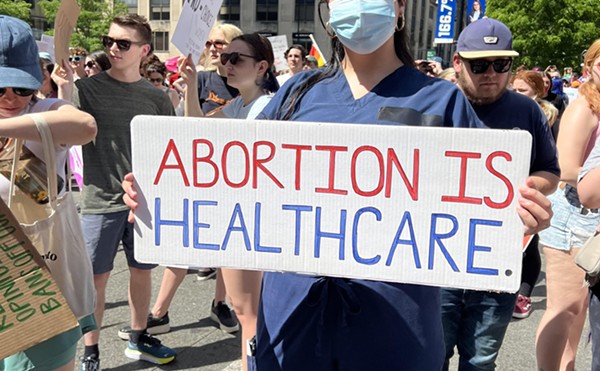It's common for us to see patients who have been in pain for many years following a motor vehicle accident. The typical story is of a seatbelted driver or passenger who's hit from the back or side.
The whiplash injury commonly involves a forward-backward-forward movement, often with some rotation as well. Usually the person gets out of the car feeling quite shaken and maybe a little sore, but not in extreme pain.
A trip to the local emergency room results in normal X-rays, some anti-inflammatories and medicine to relieve muscle spasms. The patient is then sent home, and that's when the problem starts.
Some people, and we emphasize some, develop a progressive and bizarre pain pattern known as myofascial pain. It starts because of injuries to the muscle and results in trigger points, or sore nodules, developing in the muscle.
The pain starts in a local area and then spreads around the body in an atypical fashion. It might go from the neck to the lower back, from left to right, down the arms and legs, etc. It might be dull or burning and usually becomes increasingly worse.
At this point, the person becomes alarmed and sees a physician, usually a primary care physician, a neurologist or an orthopedic surgeon. For the most part, a workup is not helpful. EMGs (which measure nerve damage) at this point are unremarkable, and MRI's (which show structural changes) are often non-diagnostic. There might be a small bulging disc, although it's not usually causing any problem.
Patients often are sent for physical therapy, which might or might not be helpful. In fact, exercises for this type of pain often exacerbate the pain and cause sleep to be disrupted. A diffuse and chronic pain pattern has set in. Let us explain why.
The "to and fro" movement of this kind of accident disrupts the normal musculature. The mechanism is unclear, but the sufferer develops knots in the affected muscles. Most of us recognize these "knots," and we want to massage them out. Unfortunately, when a muscle feels this kind of knot, it reacts by contracting around it.
This is a big part of the problem, resulting in a spasm-pain-spasm cycle. The muscle feels like it has a needle or burr stuck inside it, and the spasm just makes this worse. The pain and spasm "recruit" other muscles, and the pain cycle spreads.
Exercise often exacerbates this, as it results in contracting the muscle around the trigger point. Stretching is often better but can also precipitate spasm.
The second part of this problem is sleep disruption. When we sleep, it's important to get deep or Stage IV sleep. It is during deep sleep that a chemical known as serotonin is regenerated. Serotonin is important to feeling good, and deficiency results in feelings of depression, anxiety, fatigue and pain.
What to do
Our experience with motor vehicle accident sufferers has shown us the following:
· It's better to treat sooner than later.
· It's important to eradicate trigger points. The most useful techniques we've seen include acupuncture, trigger point injections and massage.
· Additional techniques — osteopathic manipulation therapy, chiropractic, physical therapy (mobilization/soft tissue manipulation) — often are extremely valuable.
· Anti-inflammatories don't add much value since there's no "-itis" or inflammation with this condition. Common anti-inflammatories are Advil, Ibuprofen, Aleve, Naprosyn, Voltaren, etc. They might result in irritation of the stomach tissues and gastrointestinal bleeding. Anti-spasmodics often are helpful but might cause drowsiness. Common anti-spasmodics are Flexeril (Cyclobenzaprine), Robaxin (Methocarbamol) and Valium (Diazepam).
· If a person becomes depressed, we feel that treating them early with an anti-depressant is worthwhile. We like to use a drug class known as SSRI's (Zoloft, Prozac, etc.). Effexor is another useful anti-depressant. For mild depression, and in patients who don't want to use medications, standardized St. John's Wort, at a dose of 300 mg three times per day, might be of value.
· Many patients develop post-traumatic stress disorder. A patient might develop irrational fears and flashbacks to the time of the accident with associated anxiety and depression. We suggest using a technique known as EMDR (Eye Movement Desensitization and Repatterning). During this gentle technique, the patient is able to eradicate the emotional charge around the accident very quickly, usually in two to three treatments.
· In order to break the chronic "myofascial holding patterns" following an accident, we've found Alexander Technique — which teaches individuals how to recognize and change poor posture habits associated with reactions to stress, fatigue, injury or discomfort — to be worthwhile.
In our experience, we find that it's best when patients receive comprehensive care by providers familiar with problems related to motor vehicle accidents. Patients seem to do better if they have multiple therapies all at one time, such as osteopathic manipulation followed by massage therapy. They should initially be seen one to two times per week for three to four weeks, then with a gradual reduction in frequency.
Patients should notice a progressive reduction in pain and improvement in well-being. If this doesn't happen, they should be reassessed.





